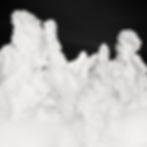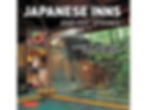Japan: Photographing the Snow Monsters in the Hakkoda Mountains
- Olivier
- May 17, 2019
- 8 min read
Updated: Mar 22
Located in Aomori Prefecture in northern Japan, the Snow Monsters are the result of unique weather conditions in the Hakkoda Mountains. They encase trees in a mass of ice and snow for 2 months. The impressive winter forms that result make them an exceptional photographic subject.

The Snow Monsters are not unique to the Aomori region or the Hakkoda Mountains. You can also find them in Zao in the Yamagata Prefecture. The Zao Mountains are more expansive, and you'll find many more subjects to photograph there.
However, Zao is a very popular winter sports resort. You have to deal with the hundreds of skiers passing in front of the lens. That's why I highly recommend the Hakkoda Mountains for photographing these Snow Monsters in peace.
Hakkoda Mountains
The Hakkoda mountain range spans a vast area, but its exact size is either unknown or a subject of debate. Mount Odake, the highest peak in the Hakkoda mountain range, reaches an altitude of 1.585 meters.
Winter temperatures can be very low, most often below 0°C, conducive to the formation of Snow Monsters. The region can also experience freezing temperatures well below -20°C.
The Hakkoda mountains are of volcanic origin. They are part of the Pacific Ring of Fire, an area of intense tectonic and volcanic activity that encircles the Pacific Ocean. They consist of several volcanoes, some of which are still considered active although they have not had major eruptions recently.
The exact age of these volcanic formations varies, but they developed over extended geological periods. The volcanoes in this region formed at different times, some of which are quite old, dating back several hundred thousand years.
The Hakkoda mountains are characterized by their volcanic cones and calderas, evidence of their origin. The region is also known for its hot springs, which are fueled by the underlying geothermal heat, another indicator of volcanic activity in the subsoil.

What Are the Snow Monsters
The "Snow Monsters" of the Hakkoda mountains are natural formations of ice and snow that take on a strange and spectacular appearance. These formations are created when frost gradually accumulates on the branches of trees, particularly conifers, during winter. The strong winds of the region, combined with freezing temperatures, contribute to this unique accumulation of ice and snow.
The process generally begins when water vapor condenses around the branches and leaves of trees, forming a layer of frost. As snow falls, it adheres to this layer, gradually creating structures that resemble fantastical creatures or monsters, hence their name.
It is obviously impossible to give an exact number of "Snow Monsters" in the Hakkoda mountains, as this varies greatly depending on weather conditions and snow accumulation each year. Moreover, these formations are not permanent or quantifiable entities in the same way as trees or lakes. They appear each winter and change in form and number depending on the weather.
The best time to observe these "Snow Monsters" is generally between January and March, when weather conditions are most conducive to their formation. The Hakkoda mountains are also known for their hot springs, hiking trails, and rich natural history. They thus make for an interesting visit in any season.
A Result of Unique Conditions
Contrary to what their name might suggest, Snow Monsters are not just covered in snow. Rather, they are the result of an accumulation of ice mass on the branches of the trees. This strange phenomenon requires a regular wind blowing in the same direction for several days and high air humidity.
The needles of these fir trees are slowly encased in ice that accumulates at their tips and eventually envelops them. Snow can then adhere to the ice. The results are astonishing. All these frozen trees have similar shapes, yet each has its own peculiarities.
The ice forming on the fir needles, caused by the wind, also traps a bit of air. This gives it a white color similar to snow. This strange phenomenon occurs annually and lasts about 2 months.

The accumulated ice protects these trees from the extreme conditions of the winters in northern Japan. These firs then regain their vigor in the spring, despite the absence of photosynthesis. It is impossible to knock this ice off the trees. They are now just hard, compact blocks, up to 3 to 5 meters high, with improbable shapes.
How to Get to the Hakkoda Mountains
The Snow Monsters are located at the summit of the Hakkoda Mountains at an altitude of about 1.500 meters, which is also an ideal spot for skiers. While not a large winter sports resort, this spot has a cable car that will take you to the top, passing over the foothills where you can admire thousands of these trees.
I recommend staying in Aomori during your visit. You can reach the start of the cable car by car via Route 103, which heads south from Aomori, or by taking a local bus that serves the station. It takes about 40 minutes by car (21 km) from the center of Aomori city (1.5 hours by local bus from the station) or about 1.5 hours (40 km) from the center of Hirosaki city, which is another lodging option.
If you are in the area in September or October, and in the absence of snow at that time, you can enjoy the autumn in the Hakkoda Mountains. It's a spectacle just as grand and colorful as only Japan can offer.
As the place has several ski trails, thrill-seekers descend the foothills between these trees at the end of the day to return to the station, leaving tracks between the trees. Therefore, it is unfortunately difficult to photograph the Snow Monsters in pristine snow from the cable car (which passes right overhead). But the spectacle is no less grandiose from above, and the best awaits you at the top.
The Sanroku Station cable car operates from 9:00 am to 3:40 pm (November to February), every 15 to 20 minutes. The ticket price is 1,250¥ for a one-way and 2,000¥ for a round trip. It takes 10 minutes to reach the summit.

Moving Around Once at the Summit
As you may have understood, if these mountains are suitable for off-piste skiing, it's because the snow conditions are ideal. Therefore, it's impossible to move between these trees in the powdery snow without sinking up to your knees and ending up with frozen feet after an hour.
Preparing with appropriate footwear, waterproof protection, or better yet, snowshoes, is essential for a serious photo session. Movement takes a lot of time. You can rent or buy snowshoes in the valley. Their cost is affordable and will greatly facilitate your task. Your work as a photographer will be more productive. You will be able to move faster and therefore go further.
Moving around is demanding and requires significant physical effort. It is wise to be prepared for this. Good physical condition is indispensable (read my article on this subject). Do not venture there if you do not feel capable. The altitude makes efforts more challenging, and the icy air does not help.

As always in such extreme conditions, I recommend traveling in pairs. Indeed, rescue and medical assistance may be present, but they still need to find you. The thousands of trees and the unevenness created by the snow make visibility impossible. In case of physical problems, it's better to have company.
With snowshoes on your feet, it is very pleasant to wander among these trees with their picturesque shapes. The expanse is vast, and it's very easy to lose track of time in front of such a spectacle. Also, plan enough time for the return trip, depending on the cable car's schedule.
Unless you plan to walk down the very steep slopes (which takes about 2 hours), check the cable car schedule and the time of the last ride down (around 3:40 pm for the last descent). Even if you're only a kilometer away, progress in this snow is very slow, and you might have some tense moments if you don't allow enough time for your return.
Preparing Your Photography Equipment for the Cable Car Descent
After spending several hours photographing in optimal light conditions, your camera will be extremely cold. Plan your batteries accordingly... The waiting hall of the cable car is heated by forced air systems that emit considerable humidity. Your camera will be covered in moisture within seconds, and you'll have to wait a long time before this moisture evaporates. The same goes for your sensor if you don't have a weather-sealed body. Often, it requires a full night to allow the sensor to dry out.
If your photo day is over, it's not too serious. But if you enter this hall during the day for any reason, protect your camera in a plastic bag or directly in your photo bag if it is insulated. The condensation will then occur on the bag, and your camera will be intact to continue your photo session.
I have rarely encountered such condensation elsewhere during my winter photo travels. This experience was significant enough for me to mention it here. I remember finally waiting outside (and not in the overheated hall) at the end of the day before running to the cable car at the last moment.

The Final Word
The Hakkoda Mountains and their Snow Monsters are a powerful symbol of resilience and transient beauty, eternally captured by the art of photography.
The mountain range and its majestic Snow Monsters offer profound reflections on nature and its immutable beauty. Each winter, these natural sculptures of snow and ice stand as silent guardians of a fleeting world, reminding us of nature's constant metamorphosis.
For the photographer, they symbolize the art of capturing the moment, seizing a fleeting instant that carries within it a timeless essence. Through the photographer's lens, these mountains and their winter creations are not mere subjects, but co-creators in a dance of light, shadow, and perspective. They teach patience, humility, and wonder, reminding us that even in the harshest conditions, nature finds a way to express its grandeur.
And if you wish to warm up after a day of photography in the polar cold, I highly recommend staying in one of the many traditional homes or Ryokan in the Aomori region. You will find the best references in this book:









